He did take three things away from his experience in Guatemala: a deeper conviction to fight American meddling in Latin American affairs; Gadea, who he married the following year; and his nickname, Che, which Argentines use the same way an American end a sentence with “dude,” or Canadians with “eh” (Wikipedia calls the “che” syllable a “vocative casual speech filler”).
Biggest controversy: While Guevara was a doctor who championed better health and education, he didn’t flinch at killing anyone he thought needed to be killed. Upon arriving in Mexico, Che befriended a group of Cuban exiles, among them Fidel and Raúl Castro, who had already tried once to overthrow Cuban dictator Fulgencio Batista, and were planning on returning to Cuba for a second attempt. Toward the end of 1956, the Castros invaded Cuba with only 82 men, Guevara among them. Of those men, 60 were killed or captured in the initial attack, but the survivors retreated to the mountains and formed a guerrilla movement. Che became Fidel Castro’s second-in-command, and was a harsh disciplinarian, shooting deserters, informers, and anyone considered a traitor to the revolution. As unforgiving as Che could be, Batista was worse, executing prisoners, and torturing and killing civilians, prompting the U.S. to stop selling arms to the Cuban government.
After the revolution finally succeeded in 1959, Guevara was placed in charge of punishing former members of the Batista government, and hundreds of people were executed, but these measures weren’t controversial at the time—one source cited a 93 percent approval rating for the post-war tribunal.
Thing we were happiest to learn: While Che was a brilliant military strategist, he was also a tireless crusader for health and education. While hiding in the Cuban mountains, Guevara discovered the local farmers had no schools and little access to health care, and nearly half of the adults were illiterate. Even while helping Castro build an army and hiding from Batista’s troops, Guevara set up schools, clinics, and a newspaper. Once Castro was in power, Guevara sent out 100,000 volunteers to train teachers and teach rural poor to read. After this effort, Cuba’s literacy rate went from less than three quarters to 96 percent.
On the last day of his life, captured while fighting to overthrow a military dictatorship in Bolivia, Che took the time to speak to a local teacher, complaining that the school was in poor condition while “government officials drive Mercedes cars.”
Thing we were unhappiest to learn: Guevara had little success beyond the Cuban Revolution. In his early days in Castro’s government, Che had nurtured Cuba’s relationship with the USSR, but soured on the Soviets after the Cuban Missile Crisis. Feeling betrayed, he became a frequent critic of Cuba’s most important ally, saying they had “forgotten Marx.” This led to a falling out with Castro, who was increasingly dependent on support from the USSR, and Che disappeared from public life before he left Cuba to continue the struggle abroad.
Guevara went to Congo in 1965 to support a Marxist rebellion against a U.S.-supported government. But it proved difficult to replicate his success in Cuba with guerrilla fighters he found undisciplined and prone to infighting. After the better part of a year, sick with dysentery and frustrated with his comrades-in-arms, he withdrew to Prague to recover and plan his next move. By 1967, Che was in Bolivia, where again a guerrilla force was trying to overthrow a U.S.-backed government. Guevara led a few successful attacks on army patrols, but unlike Cuba, the locals were less inclined to support the rebels, and often reported on their whereabouts to the government. By October, most of Che’s soldiers had been killed, and Bolivian troops surrounded Guevara with 1,800 soldiers. He surrendered after being wounded, and on the orders of Bolivian president René Barrientos, was executed the following day.
Also noteworthy: Guevara was a multi-faceted individual, which likely accounts for the public’s ongoing fascination with him. Dozens of books have been written about him, with Gabriel García Márquez claiming, “it would take a thousand years and a million pages to write Che’s biography.” Guevara himself wrote the first among them—The Motorcycle Diaries, recounting one of his early trips across South America; Guerrilla Warfare, an account of the Cuban revolution intended as a guidebook for future revolutionaries; and Episodes Of The Cuban Revolutionary War, a more personal account of Che’s role in that conflict. The first of those three was adapted into a film with the same name, starring Gael García Bernal; the third was the basis for much of Steven Soderbergh’s biopic Che.
Further down the wormhole: Before Che went to Congo, Egypt’s president, Gamal Abdel Nasser, warned Guevara he wouldn’t succeed, and would be seen as a “Tarzan” figure, meaning a meddling outsider come to “civilize” the locals. In Edgar Rice Burroughs’ enduring book series, Tarzan, a boy raised by apes, grows up to reject human society to become a heroic adventurer. Burroughs’ books have been adapted into numerous media, including a long string of films. Among those media are pulp magazines, whose lurid pages we’ll peruse next time.



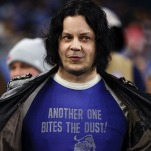

![Rob Reiner's son booked for murder amid homicide investigation [Updated]](https://img.pastemagazine.com/wp-content/avuploads/2025/12/15131025/MixCollage-15-Dec-2025-01-10-PM-9121.jpg)
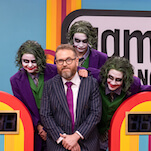


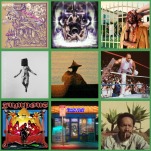


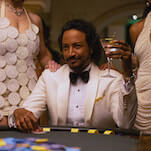

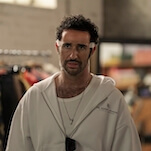




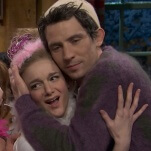

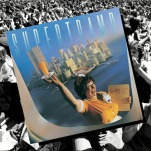









![HBO teases new Euphoria, Larry David, and much more in 2026 sizzle reel [Updated]](https://img.pastemagazine.com/wp-content/avuploads/2025/12/12100344/MixCollage-12-Dec-2025-09-56-AM-9137.jpg)








